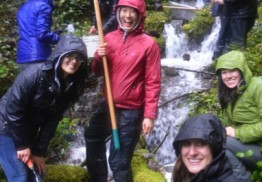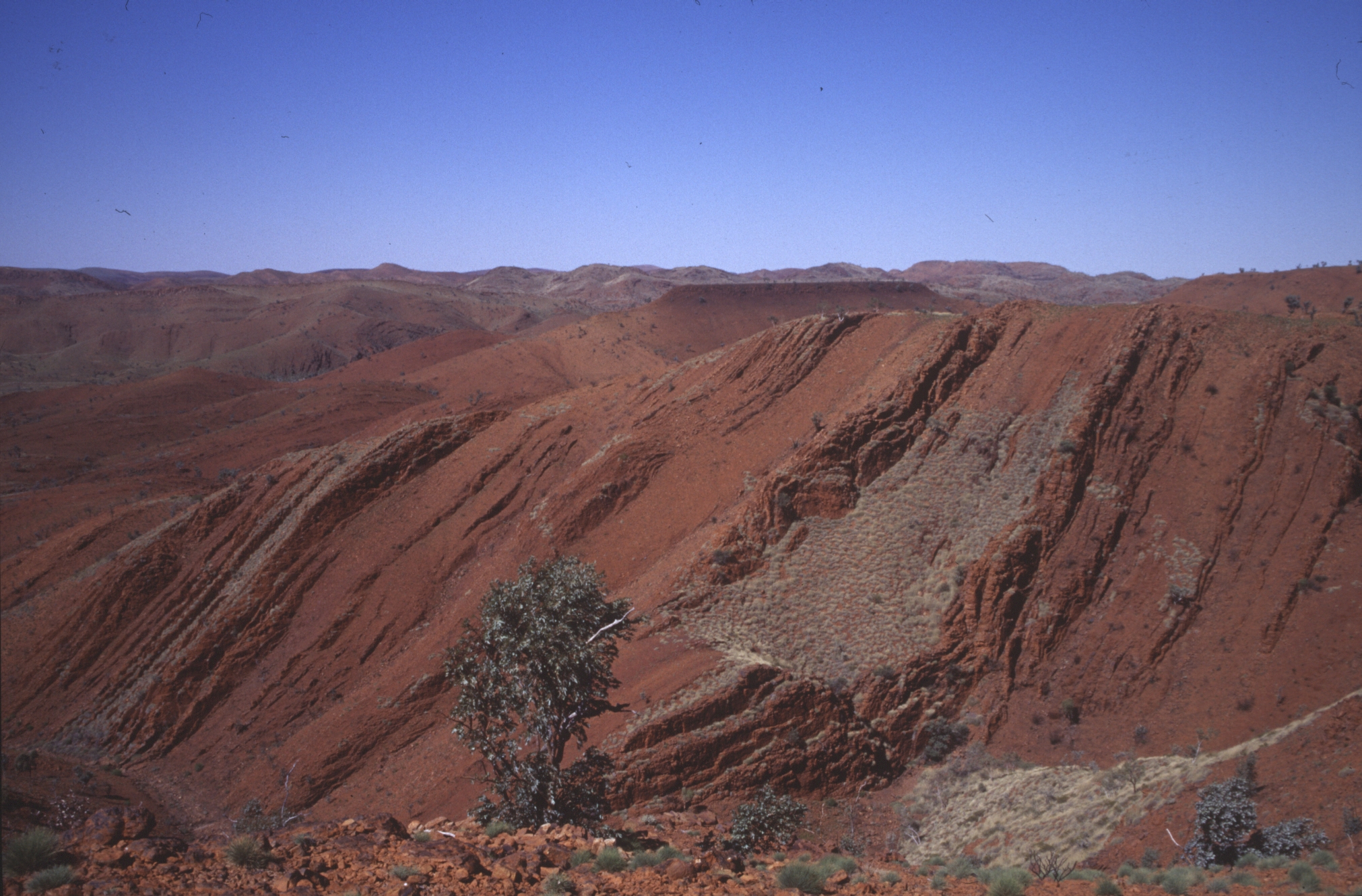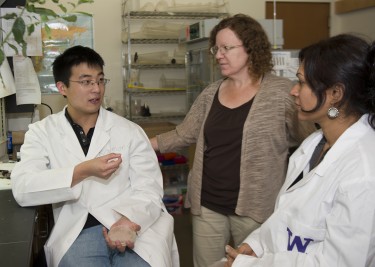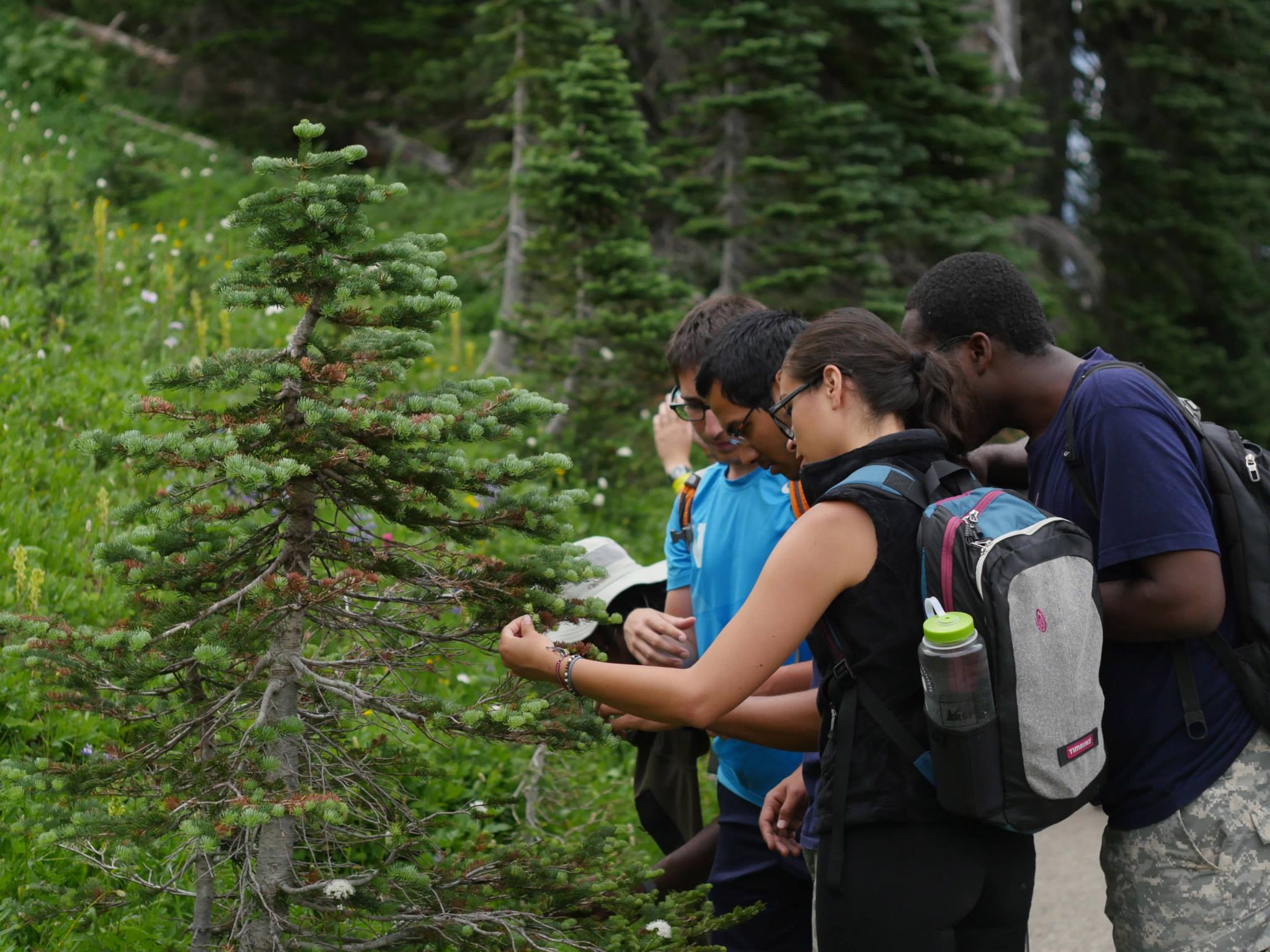Student scholarships offered through the College of the Environment for the 2015-2016 academic school year are now open! Most importantly, note that all scholarship application materials are due by Friday, April 17, 2015. Available scholarships include Clarence H. Campbell Endowed Lauren Donaldson Scholarship, College of the Environment Scholarship, Del Rio Environmental Studies Scholarship, Nancy Wilcox Scholarship, and the Yakama Nation Endowed Fund for Student Support.
Read more »World's oldest rocks show signs of life on Earth 3.2 billion years ago
Recent findings from Earth and Space Sciences‘ Roger Buick, Eva Stüeken, and Matt Koehler, with Bradley Guy from the University of Johannesburg, suggest that life on Earth may have flourished more than a billion years earlier than previously thought. Nitrogen is a building block of amino and nucleic acids, both essential for life on Earth. By studying some of the planet’s oldest rocks, which contain preserved chemical clues and are free of chemical irregularities, the team concluded that life was pulling nitrogen out of the air and converting it into a form that could support larger communities 3.2 billion years ago.
Read more at UW Today »Oceanography undergrads blog from Vancouver Island
The Research Vessel Thomas G. Thompson —UW’s 274-foot-ship capable of accessing the world’s oceans—provided a platform for research and a home to several oceanography students as they wrapped up their quarter’s research in mid-December. Sending scientific instruments overboard to capture and record all sorts of ocean data, the students blogged about their adventures along the west coast of Canada and shared what they learned.
Read more at UW Today »‘Probiotics’ for plants boost detox abilities; untreated plants overdose and die
Scientists using a microbe that occurs naturally in eastern cottonwood trees have boosted the ability of two other plants—willow and lawn grass—to withstand the withering effects of the nasty industrial pollutant phenanthrene and take up 25 to 40 percent more of the pollutant than untreated plants. The approach could avoid the regulatory hurdles imposed on transgenic plants—plants with genes inserted from or exchanged with other plant or animal species—that have shown promise in phytoremediation, the process of using plants to remove toxins from contaminated sites, according to Sharon Doty, associate professor of environmental and forestry sciences and corresponding author on a paper about the new work in Environmental Science & Technology.
Read more at UW Today »UW program aims to diversify the conservation workforce
The Doris Duke Conservation Scholars Program at UW wrapped up its inaugural year on August 14 in a symposium where students shared their experiences over the course of the summer. Focusing on the intersection of environment and society, the students spoke about the issues surrounding climate, water, biodiversity and food. Instead of learning about these topics solely in the classroom, a majority of their time was spent in the field around Washington state, including in our urban environments, along the coast, up in the mountains, and in the agricultural fields on the eastern side of the state.
Read more at the Seattle Times »





